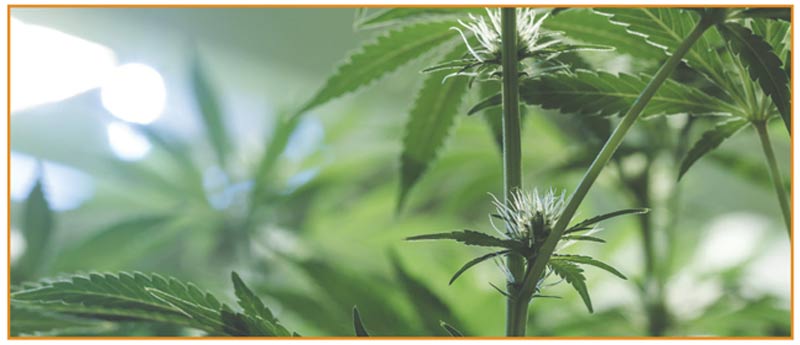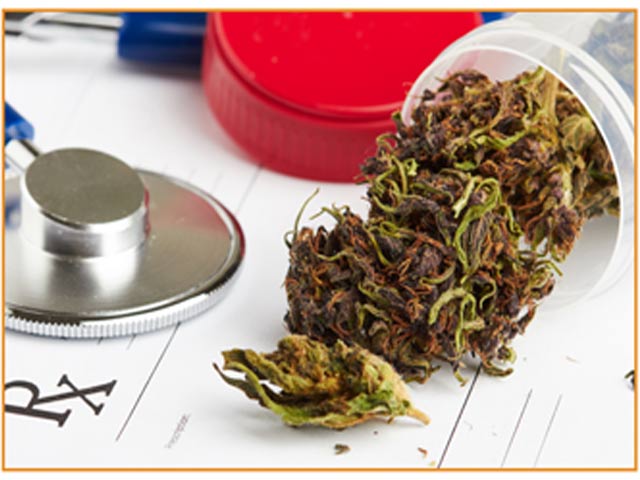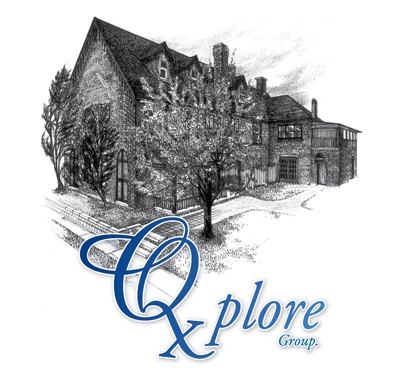FALL 2017

Medical and Recreational Cannabis: Preparing for a New Era
Kate Kneisel, B.A. and
Robert Kitcher, M.A., RP
When Cannabis Use Becomes a Problem
Paula Buskard, M.A, RSSW
WELCOME TO OUR FALL 2017 NEWSLETTER
Welcome to our Fall 2017 Newsletter. Summer holidays are over and school is back.
Virginia Palmer, RP, Clinical Coordinator
Medical and Recreational Cannabis: Preparing for a New Era
Kate Kneisel, B.A. and Robert Kitcher, M.A., RP
 An extended version of this article is available at: www.qxplore.com/cannabis-extended
As you read, you will find appendices referenced that can be accessed on the Qxplore Group website at www.qxplore.com/cannabis-appendices
An extended version of this article is available at: www.qxplore.com/cannabis-extended
As you read, you will find appendices referenced that can be accessed on the Qxplore Group website at www.qxplore.com/cannabis-appendices
Part 1: Medicinal Use
Since marijuana, or more scientifically speaking, cannabis, has been approved for medical purposes and Canada moves toward legalizing and regulating its use and supply, the wide array of products available and the volume of information and misinformation may seem overwhelming.Did you know?
Canada has one of the highest rates of Cannibis use in the worldThe endocanninoid system
The body’s endocannabinoid system naturally produces chemicals like those found in the cannabis plant, which transmit signals between the brain and nerve cells throughout the body. In fact, cannabinoid receptors develop in humans before birth and naturally produced endocannabinoid compounds are even found in a mother’s breast milk. Research suggests that the endocannabinoid system is involved in a wide range of human bodily functions and dysfunctions, including development of the nervous system, immune function, inflammation, digestion, psychiatric disease, memory, sleep, pain, and regulation of stress and emotions.QUINTE COUNSELLING SERVICES INC.

The Phytocannabinoids
While the hemp plant and cannabis use have a history dating back thousands of years, cannabis research is still in its infancy – and already more than 85 different cannabinoids are said to have been identified within the cannabis plant. [Appendix C, 2015 “High Times” article on the relevance of cannabis strain] The two best known cannabinoids, tetrahydrocannabinol (THC) and cannabidiol (CBD), have been studied individually, and many of their specific properties have been identified although not necessarily confirmed in human or clinical studies. However, increasing evidence suggests that use of isolated cannabinoids may provide less medicinal benefit than use of the whole plant. This synergistic activity, known as the entourage effect, was proposed by Israeli scientists in 1998 and there is growing support for the theory. [Appendix D, Education on all aspects of cannabis from the MedicalJane website]Tetrahydrocannabinol (THC)
THC is psychoactive, meaning it affects mental functions such as thinking, mood, perception, and behavior. Research suggests that THC has properties that may help relieve pain, nausea and vomiting, and inflammation, and a variety of additional properties are being investigated.Cannabidiol (CBD)
CBD is not psychoactive; although most studies of CBD have been done in laboratory rather than in human beings, research suggests that CBD has properties that may help relieve inflammation, pain, nausea and vomiting, anxiety and symptoms of epilepsy.Therapeutic potential of cannabis
Two factors are thought to help determine a cannabis plant’s specific effects – its THC and/or CBD content, and whether the plant strain is largely indica or sativa. Health Canada noted in February 2013 that there is insufficient support for claims that one strain of cannabis may be more beneficial than another for a particular medical condition. Nevertheless, approved medical cannabis producers [Appendix E, A link to Health Canada-authorized licensed producers of medical cannabis] generally indicate the cannabis plant strain, proportions of THC-CBD for their products, and suggested timing of use. Their consultants will also assist patients and their physicians in selecting the most appropriate product for a given condition and patient health profile.6,7 [Appendix F, Cannabis product information from two licensed producers]“Patients tell me that it doesn’t make the pain go away, it just makes it not matter.” — Dr. Mark Ware, 2014 McGill conference [Appendix G, Medical cannabis conference]
Forms of cannabis
Cannabis is available in a variety of forms – it may be smoked, vapourized (“vaped”), or inhaled using an e-cigarette device, consumed as oil under the tongue or in food, juiced, or brewed as tea, or applied topically on the skin. The original prescribed, pharmaceutically-developed cannabinoids are taken orally: Nabilone (Cesamet) is synthetically produced and taken in capsule form, and THC/CBD (Sativex) is a spray derived from cloned cannabis, also taken by mouth. Another synthetic oral product, dronabinol (Marinol), is no longer available due to adverse effects. [Appendix H, Information from the nonprofit Canadian Consortium for the Investigation of Cannabinoids (CCIC)] Another untested, non-pharmaceutical form of synthetic cannabinoids (e.g., K2 and Spice) are offered as “legal” forms of cannabis. These have more severe psychoactive effects and carry significant health risks, including cases of death.10 [Appendix I, March 2014 Bulletin on Synthetic Cannabinoids from the Canadian Community Epidemiology Network on Drug Use]Method of administration The way a person takes cannabis will depend on their treatment requirements – such as how quickly they require it to take effect and how long they want the effect to last. The effects of smoked/vaped cannabis begin within minutes, and last a shorter time compared to taking cannabis in foods. In contrast, the effects of ingested cannabis occur more slowly over several hours, and last longer. Although there is conflicting evidence regarding the carcinogenic potential of cannabis smoke, Health Canada notes that this route of administration can have negative effects on respiratory health and is best avoided. While not entirely risk-free, vapourization or “vaping” and use of e-cigarette devices offer a lower-temperature alternative with less of the toxic by-products of smoking, and more efficient uptake of THC from the cannabis. Dabs are inhaled in very small quantities using a specially developed vaporizer called a dab rig. Edible cannabis oils can be added to foods or taken under the tongue, which is the most efficient means of maximizing the bioavailability of the cannabinoids, and obtaining the effects as rapidly as would be provided by inhalation.What can cannabis be used to treat?
Those with a medical condition who are seeking access to medical cannabis should ideally broach the subject with their physician, since legal use requires a prescription. [Appendix J, Basic regulatory information on medical marijuana for Canadian doctors from the Canadian Medical Protective Association] Individuals who may not have a physician, are reluctant to make that request, or have had their physician refuse to prescribe medical cannabis may choose to pursue other avenues through medical cannabis clinics or an online medical provider such as Medical Marijuana Services, which lists potential indications.[Appendix K, A patient navigation service to help people access medical cannabis]QUINTE COUNSELLING SERVICES INC.

Adverse effects and Interactions
The most significant interactions may occur when cannabis is taken with other CNS depressant drugs such as sedative-hypnotics or alcohol. Cannabinoids may enhance the effects of opioids, thus allowing the opioid dose to be reduced, which in turn may lessen opioid-related side effects.Risks
Health Canada provides information on the psychiatric effects of cannabis use in specific psychiatric subpopulations. [refer to Appendix A] The Lower-Risk Cannabis Use Guidelines (LRCUG) released in June 2017 note that “cannabis use is common, especially among adolescents and young adults… and is associated with risks to both immediate and long-term health.” As providers of mental health and Employee Assistance Program services, counselors will need to be vigilant for signs of cannabis abuse. The Centre for Addiction and Mental Health (CAMH) offers a brief version of the LRCUG guidelines intended for the public. [Appendix L, Lower-Risk Cannabis Use Guidelines aimed at people who use cannabis] Tips for parents about discussing cannabis with their children are also available from Drug Free Kids Canada, at www.drugfreekidscanada.org. Individuals who are having difficulty with cannabis or any other substance should consult their physician, and/or seek psychotherapy through their Employee Assistance Program or other mental health and addiction services. For an extended version of this article with references, links and Appendices mentioned in this article, please visit: www.qxplore.com/cannabis-extended and www.qxplore.com/cannabis-appendicesKate Kneisel, B.A. is an award-winning content producer – she has written hundreds of articles on health and medical topics, and also writes on topics of interest in the community. Kate graduated from Trent University with a BA in English. She recently moved back into Belleville from a farm in Prince Edward County. To find out what Kate has been writing over the last 25 years, visit www.yourmedicalcopywriter.com
Bob Kitcher M.A., RP is the Managing Director of the Qxplore Group of companies which includes Quinte Counselling Services, Quinte Assessment and Treatment Group, and Qxplore Inc.
When Cannabis Use Becomes a Problem
Paula Buskard, M.A., RSSW
 If it’s legal, it must be okay, right? Not necessarily. Alcoholics Anonymous, Mothers Against Drunk Driving and Health Canada would argue that alcohol is legal but using it can risk life altering consequences. Cannabis use is the same.
It is about consequences. Regardless of whether something is legal or illegal, the consequences need to be considered. If using the substance brings negative consequences for the person using the substance or the people who care about that person, that may be an issue. If negative consequences outweigh the positive effects, then therapy may help to change that.
Therapeutic approaches are as varied as individuals seeking counselling. However, what we do know is that how we “think” about cannabis use will impact how we “feel” towards the substance and this will decide our “behaviour” about using cannabis. In therapy, this approach is called Cognitive Behaviour Therapy (CBT). The goal in CBT is to examine the thoughts that are attached to the use, such as: “using helps me forget past or current trauma” (numbing out) or “using helps me cope with stress and/or anxiety” (coping mechanism) or “using helps me sleep” (sleep disorder), to name a few. Using cannabis may provide a temporary reprieve but it does not address the issue. For example: if you have had past or current trauma then therapy to heal from trauma may be needed; if stress and anxiety negatively impact your life then learning healthier coping strategies may be needed; if sleep is an issue then addressing the reasons for not sleeping and/or healthy strategies to assist with sleep, may be needed.
In conclusion, legal or not, using Cannabis can result in negative consequences. If cannabis causes more problems for you or for people who care about you, possibly it is time to change your thoughts, feelings and actions because the reprieve from cannabis you sought has now become another issue.
If it’s legal, it must be okay, right? Not necessarily. Alcoholics Anonymous, Mothers Against Drunk Driving and Health Canada would argue that alcohol is legal but using it can risk life altering consequences. Cannabis use is the same.
It is about consequences. Regardless of whether something is legal or illegal, the consequences need to be considered. If using the substance brings negative consequences for the person using the substance or the people who care about that person, that may be an issue. If negative consequences outweigh the positive effects, then therapy may help to change that.
Therapeutic approaches are as varied as individuals seeking counselling. However, what we do know is that how we “think” about cannabis use will impact how we “feel” towards the substance and this will decide our “behaviour” about using cannabis. In therapy, this approach is called Cognitive Behaviour Therapy (CBT). The goal in CBT is to examine the thoughts that are attached to the use, such as: “using helps me forget past or current trauma” (numbing out) or “using helps me cope with stress and/or anxiety” (coping mechanism) or “using helps me sleep” (sleep disorder), to name a few. Using cannabis may provide a temporary reprieve but it does not address the issue. For example: if you have had past or current trauma then therapy to heal from trauma may be needed; if stress and anxiety negatively impact your life then learning healthier coping strategies may be needed; if sleep is an issue then addressing the reasons for not sleeping and/or healthy strategies to assist with sleep, may be needed.
In conclusion, legal or not, using Cannabis can result in negative consequences. If cannabis causes more problems for you or for people who care about you, possibly it is time to change your thoughts, feelings and actions because the reprieve from cannabis you sought has now become another issue.
Paula Buskard, M.A. RSSW, is an Employee Assistance Program therapist who provides services to adults, couples and families for addictions, PTSD, depression, anxiety, relationship issues and stress management.
QUINTE COUNSELLING SERVICES INC.


What Kinds of Services are Provided Through the EAP? |
|
|---|---|
| Separation Counselling | Marriage and Relationship Counselling |
| Counselling for Work Issues | |
| Grief and Bereavement Counselling | Family Therapy Play Therapy |
| Addiction Assessment and Counselling | Counselling for Child and Adolescent Issues |
| Chronic Pain Management | Counselling for Survivors of Sexual Abuse |
| Counselling for Seniors’ Placement Issues | Trauma Debriefing |
| Referral Co-ordination | Assertiveness Training |
| Financial Counselling | Stress Management |
| Individual Solution Focused Therapy | Family Life Education |
| Weight Management Counselling | |
Did you know…
→No one at your place of employment will know that you have used your EAP unless you tell them?
→Counselling is provided for a broad range of services, including marital and relationship; parenting; stress; separation/divorce trauma; workplace; and personal issues?
→Counsellors can help you access community resources and support groups?
→A comprehensive description of the services provided through your EAP is available through your EAP brochure or on our website at www.qxplore.com?
***PSYCHOEDUCATIONAL ASSESSMENT SERVICES***
Are you a worried parent whose child or adolescent is experiencing difficulty with:*Early Childhood development
*Not achieving at the expected level?
*Mathematics, Reading, Spelling, or Writing skills?
*Managing emotions and getting along with others?
*Motivation, paying attention and/or concentrating?
*Transitioning to college or university?
A Psychoeducational Assessment by Quinte Assessment and Treatment Group Inc. can identify causes of your child’s problems and recommend what can help.
Lynn Andrews, Ph.D., C.Psych.; Donna Boulton, M.Sc., C.Psych.; Shara Highgate., Ph.D., C.Psych.; Tamara Davidson Marcon, M.A.; Shannon Mossip, M.A., C.Psych.;Eva Mourelatos, M.A., RP; Mohammad Nikkhou, Ph.D., C.Psych.; Anita Ramani, Ph.D. BCBA-D, C.Psych.; Adira Winegust, M.A.
Quinte Counselling Services Inc.
208 John Street Belleville, Ontario, K8N 3G1 Tel: 613-966-4262 Fax: 613-966-4265 Toll Free: 1-800-527-7793 reception@qxplore.com www.qxplore.com
QUINTE COUNSELLING SERVICES INC.

